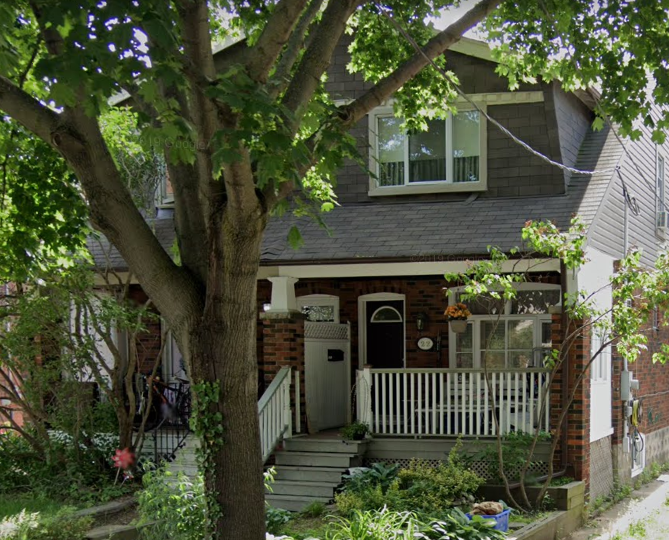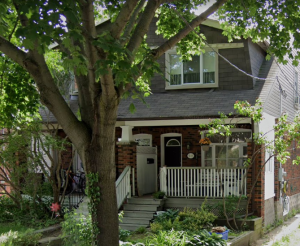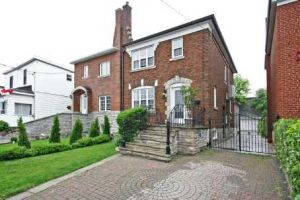
A mortgage for a Laneway Home or Garden Suite is different from conventional financing. First, you are borrowing to build rather than buy. Second, the building you’re adding to your property is unfamiliar to everyone involved – lenders, municipalities, mortgage brokers, contractors and financing professionals. Adding a home or suite will be worth it and some municipalities have grants and supportive programs, but the process will have nuances, quirks and kinks.
At the Mortgage Trail, I have financed laneway homes and garden suites across southern Ontario. I also have personal experience, having gone through the City of Toronto’s approval and building permit process for a laneway house at my mid-town home.
Members of my team have completed laneway housing financing across the GTA. Every build has a unique challenge — and some have many! In the the last two months we have financed a laneway home in the Danforth and Pape area and a garden suite in the High Park neighborhood.
We refinanced this property for laneway home development
Laneway houses and garden suites still ‘green’
Laneway homes are a few years out of approval and garden suites were only recently approved. There’s a lack of resources for both homeowners and professionals. Different municipalities also have different guidelines and requirements and those rules can differ even within a municipality. For example, if the build is in a rural area rather than an urban one. Ongoing communication is slowly turning into a framework for approving and financing laneway homes and garden suites with less red tape.
Because of the uncertainty and nuance, mortgage brokers, architects, contractors, realtors and other professionals are taking a collaborative approach to sharing resources as information turns into clarity. We are proud to be a part of that community and to bring our own leadership.
Websites and YouTube channels with a focus on laneway homes have sprung up. Advocates have emerged. The Greater Toronto Area has the likes of Daniel Hall at Lanescape and Marty Steele who have helped coordinate with city hall to start approving applications. In the coming months we will host Laneway Home and Garden Suite financing sessions at our new Mortgage Trail office at 701 Coxwell Avenue.
Building a laneway home or garden suite
Because there is more risk for the lender, financing a laneway house or garden suite comes at a premium (i.e. a higher interest rate). The basic order of operations is:
- A lender agrees to finance the project
- Advances are made at predetermined intervals or when specific criteria are met
- The loan is paid off at project completion (there should be a completion plan)
It is important that the lender accept a revised property value that includes the new build. Until provincial legislation was introduced in 2020, lender appraisals were limited to the principal residence and could not include the value of ‘outbuildings’, the general name given to laneway homes, coach houses, nanny quarters and a dozen other terms that are used interchangeably and at times, incorrectly. There’s a legal difference between a Laneway Home and a Garden Suite, for example.
There are several Lenders who are prepared to accept the additional value of an additional structure. The rules surrounding those are evolving but take into a variety of considerations, including:
Before a lender will consider financing, a laneway house or garden suite needs to meet some requirements*.
- Minimum square footage
- Must not be the largest structure on the property
- Self-contained bathroom
- Self-contained kitchen
- Specific location
- Requires entrance via laneway or path to property, depending on type
- Must be legal and conforming according to local bylaws
*Municipalities can have their own requirements around laneway homes and garden suites, and even those requirements can change depending on the density and location.
Building a Laneway home or garden Suite To rent out

In an effort to make neighbourhoods more affordable and diverse, municipalities are encouraging property owners to rent, rather than sell, their outbuildings. Cities like Toronto are offering development fee deferrals and grants of up to 50k for laneway homes, as long as rents are in line with market values. As an ancillary second dwelling unit, Garden Suites currently quality for the development fee deferral, but do not have a grant program. It is reasonable to assume that they will also be supported in the future.
Laneway homes and garden suites in Toronto are not ‘flipper friendly’
Within the City of Toronto, the most common block for building a laneway home is the development charge. Unless deferred by the city, the homeowner is required to pay the development fee upfront. In my personal situation, a Laneway Suite of just over 800 square feet would have incurred a development charge of approximately $75,000.
Needing to pay a hefty development charge has stopped many projects at the conversation stage. For developers and contractors who are looking to build and sell, that fee is the difference between a project being profitable or not. Municipalities do not want speculators.
Can I use the equity in my property to finance a garden suite or laneway house?
Yes. You can refinance your home or use a HELOC to acquire the equity you’ll need for what can be a lengthy process. In my personal situation, ten years of appreciation on my property allowed my refinance to fund the project. Not surprisingly, most Laneway Homes we finance are built by homeowners who had purchased their homes some time ago. These individuals have equity available and are not looking for a short-term profit.
Policy, programs, lending and other supports are evolving at a steady rate in the GTA. In the meantime, if you have a question we are an email, phone call or text away.


